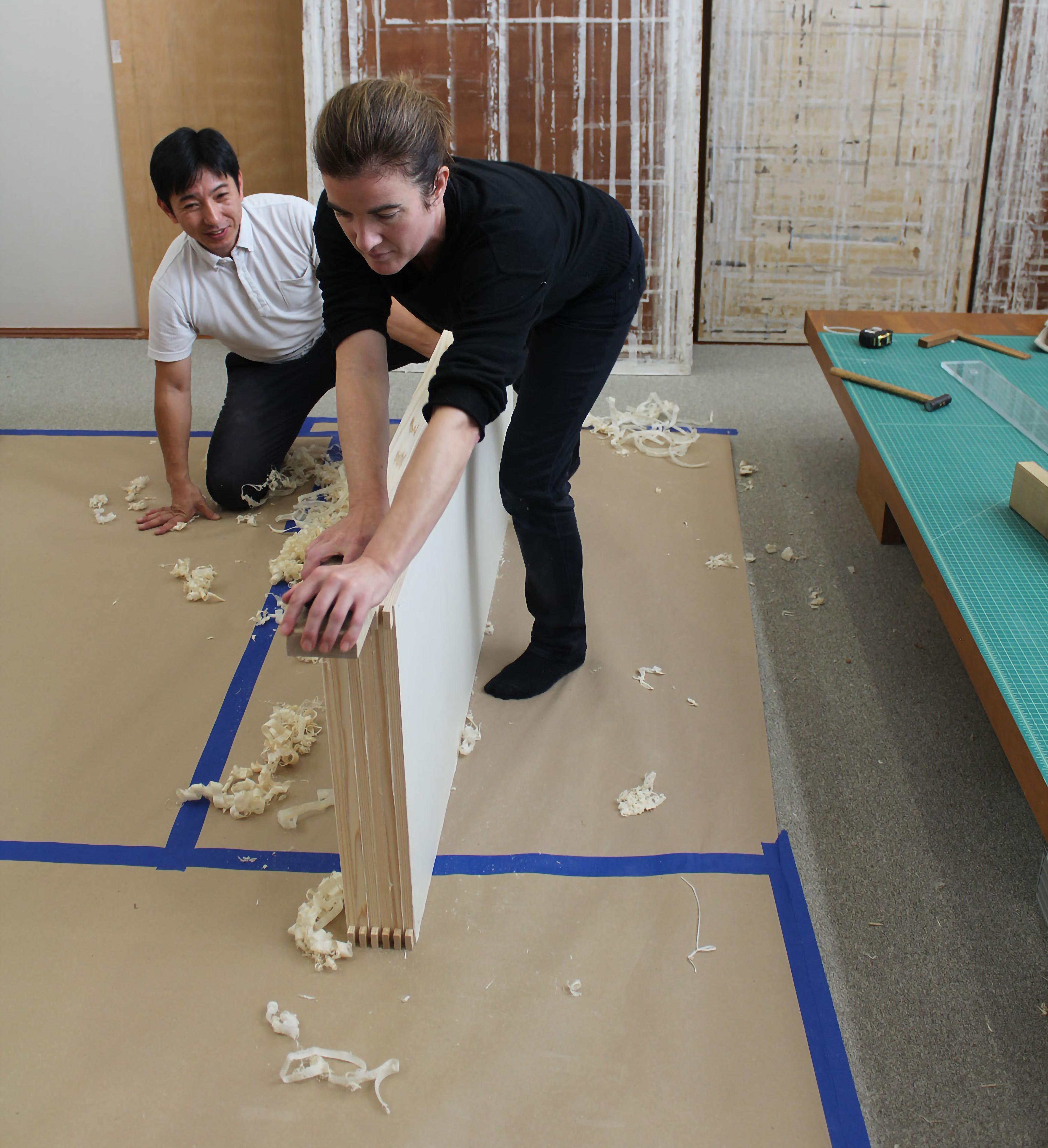Jennifer Perry, Mary and James Wallach Conservator of Japanese Art, and Masanobu Yamazaki, Conservator, are carrying out the two-year treatment and remounting of Tagasode (“Whose Sleeves?”), a pair of folding screens formerly in the H. O. Havermeyer Collection.
Conservation of Tagasode (“Whose Sleeves?”)
Created in the first half of the seventeenth century, these impressive screens were executed in lavish layers of mineral pigment and gold leaf on paper, yet had become soiled and abraded over the centuries. They required consolidation of the painted surfaces followed by gentle washing, and replacement of old repairs and backing papers.

Jennifer Perry and Masanobu Yamazaki work on Tagasode (“Whose Sleeves?”). Japanese, Momoyama (1573–1615) or Edo (1615–1868) period, first half of the 17th century. Pair of six-panel folding screens; ink, color, gold, silver, and gold leaf on paper. The Metropolitan Museum of Art, New York, H. O. Havemeyer Collection, Gift of Mrs. Dunbar W. Bostwick, John C. Wilmerding, J. Watson Webb Jr., Harry H. Webb, and Samuel B. Webb, 1962 (62.36.2, .3)
Furthermore, warping and insecure under-papering of the inner wood-lattice panels and weak hinges necessitated the rebuilding of the folding screen structure, including the replacement of the panels and lacquer frames. Sourcing of handmade materials in Japan presented both a challenge and an opportunity to support materials makers there.
Funding for the conservation materials was generously provided by Patricia Saigo.
Woodworking Specialist Hiroaki Usui Joins the Team

Hiroaki Usui fitting the lacquered wood frame to the interior panels of the folding screen
The Met conservators invited woodworking specialist Hiroaki Usui of Kyoto to lead tutorials on techniques specific to the construction of Japanese folding screens. Their training was carried out during the course of treatment and remounting of Tagasode (“Whose Sleeves?”), the pair of folding screens formerly in the H. O. Havermeyer Collection.

Wood specialist Hiraoki Usui instructs conservator Jennifer Perry on the proper use of the wood plane in squaring off the wood panels for the folding screen, Tagasode (“Whose Sleeves?”)
During the first session in October 2017, the conservators learned the procedure of squaring off folding screen panels using wooden planes (above). Meanwhile, specialists in the Objects Conservation Department were invited to join a workshop on the history and application of joinery methods in Japan.
In January 2018, the Department of Asian Art invited Mr. Usui to lead a second training session at The Met on the fitting of lacquered wooden frames to folding screens, including Tagasode.
Funding for the project was generously provided by Patricia Saigo.
